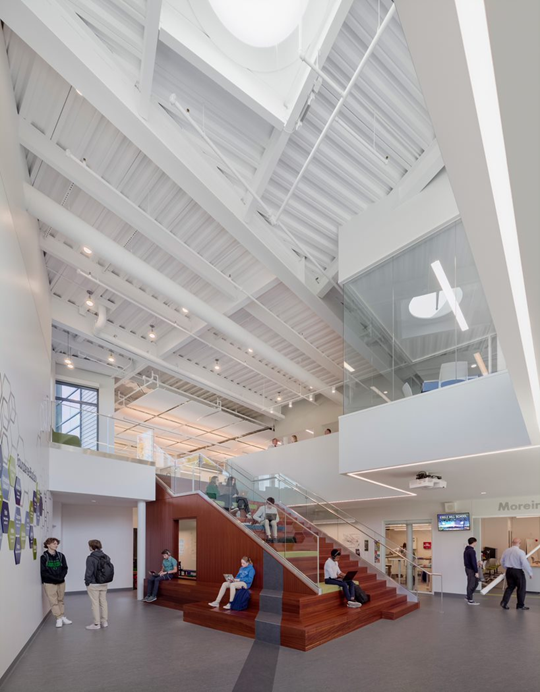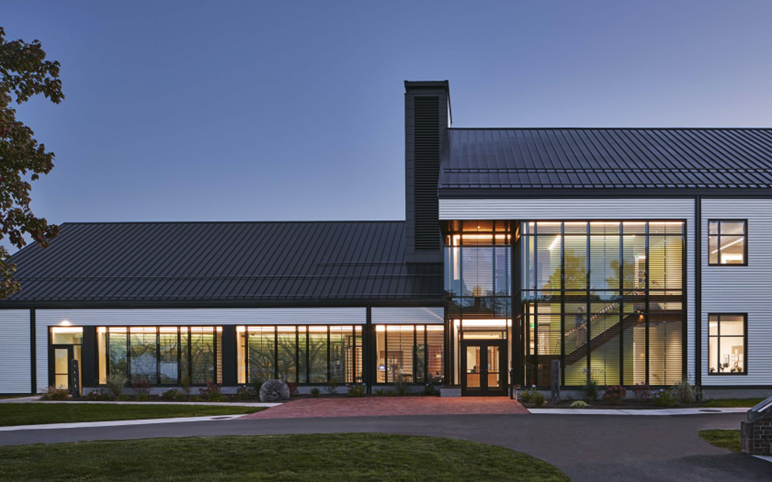As independent schools continue the transition from the pandemic phase to an endemic phase, school leaders confront a rising need to improve student mental health and wellbeing. One tangible way to achieve this objective is to evaluate options to improve the overall student experience in campus settings and create new opportunities for connectedness and community.
Multiple studies reveal that the pandemic experience exacerbated what was already a challenge for school-age children. Lack of social contact and peer activities during COVOD-19 shutdowns diminished student happiness and well-being, as subsequent research showed. Data from a 2021 CDC study on Gen Z mental health revealed some of the effects. Among the findings: 44 percent of 7,700 high school students reported persistently feeling sad or hopeless.
While these studies confirm health trends familiar to anyone working in education settings, they also offer helpful insights on how we can help bring about positive impacts.
In a May interview with Forbes, Kathleen Ethier, director of the division of adolescent and school health for the Centers for Disease Control and Prevention (CDC), summarized the opportunity. “One of the really significant findings was the degree to which school connectedness contributes to wellbeing,” she said. “It’s the understanding that there are others at the school who care about you, that you feel close to them, they are there for you and are interested in your success.”
Recognizing that most independent school communities already earn high marks for student engagement and social activity, we see the opportunity to build upon this tradition by enriching connectedness and fostering healthier student outcomes. From low-cost
solutions to capital budget items, schools are getting creative in planning wellness-centered facilities.
A Welcoming, Home-Like Health Center

As the health mission evolves and expands to meet today’s needs, the spaces where health services are provided are evolving and changing too. One noteworthy trend is the integration of wellness practices and programs with healthcare treatment. Deerfield Academy’s D. S. Chen Health and Wellness Center, a two-story 2019 facility that replaced its 1940’s predecessor, changed how the school’s 655 students relate to and experience the care they need.
Among the changes made possible with the new Center is the school’s ability to provide a more welcoming and stigma-free experience for students with social, emotional, medical, and behavioral health needs. Its features include:
- Central location: For students at many independent schools, accessing health services requires a trip across campus. Locating health and wellness services as close as possible to student life spaces, engagement is not only easier for students but helps destigmatize the need for mental health support. Since its opening, the Center has generated a significant increase in students seeking care, allowing the school to better support student health and wellness needs.
- Comfortable settings: Instead of a clinical, doctor-office atmosphere, the center creates a more home-like setting with warm color tones, comfortable furniture, crafted artwork, abundant daylighting and the use of natural materials for the building’s floors and walls.
- Flexible rooms: Based on the input from students, school staff, and health professionals, we added a private quiet room to complement a variety of flexible spaces: a day room, a counseling suite and recovery/overnight rooms.
Campus-wide Opportunities
A powerful complement to providing holistic, accessible health services is to create opportunities across the campus that encourage beneficial connections in everyday student life. Peer counseling programs, including the one at Deerfield Academy, offer one-to-one connections where younger students are paired with older peers for conversations and guidance.

These connections are especially helpful for students who may struggle with fitting into a new school or finding friends. Most of the time, newcomers are more inclined to talk to a peer than a professional counselor.
Carving out comfortable, flexible spaces where peer counselors can meet will help to strengthen these informal, supportive connections. Student life buildings are ideal locations for these meetings.
Other campus environment initiatives - at varying scales of investment – implemented by independent schools to support student wellness include:
Inside Eagle Hill School’s STEM+ Center, learning is about making connections – physical, intellectual, and emotional. Large and small collaborative group activity is supported by teaming and breakout spaces of varying scales, facilitating experiences that support and encourage engagement between students.
Situated at the heart of the campus, the Center also serves as the logical pedestrian pathway connecting dormitories, dining commons, and the student union. Natural foot traffic entering the Center generates impromptu engagements once inside.

The Middle School at Greenwich Country Day School applies evidence-based biophilic design tactics to nurture the creativity and connectivity of students. Popularized by psychologist Edward O. Wilson, biophilia is defined as a universal need of humans to see and connect with the outdoors and nature.
In most classrooms, the emphasis is on indoor surroundings and electronic screens. Here, three classroom wings each invite in the natural environment with full-height windows and large wall graphics reflecting the natural beauty and colors seen in the local environment.
At Phillips Exeter Academy (PEA), the school reclaimed a series of dark, underutilized storage spaces in the basement of PEA’s 1910 Thompson Gymnasium for student use. The rejuvenated, renovated space is now the Downer Family Fitness Center, a sun-filled, 10,000 square-foot community space where everyone in the PEA community is welcome. Many campuses contain similar underappreciated or leftover spaces waiting for a rejuvenation. Even a small-scale space, matched with the right repurposing idea, can find new life.
Athletic and Fitness Buildings: Engage the Entire School Community
Athletic buildings and fitness centers are traditionally seen as places with a specific, narrowly defined use. However, because of their size, scale, and location, these facilities provide an untapped potential to strengthen the student experience.
The Walter C. Johnson Center for Health and Wellness on the Hackley School campus is a recent example of achieving this elevated experience. While it is, technically speaking, an athletic building, the vision was to provide a place where every student is welcome and able to enjoy an ever-changing program of activities and social experiences.

Inclusive Program Variety
The Center’s programming supports the connectedness goal by hosting student-run events, offering inclusive fitness, yoga, and dance classes, providing nutrition education in the onsite, hands-on teaching kitchen, and presenting a variety of health education and wellness topics in an informal meeting space.
Flexibility for Changing Use
This variety of community experiences is enabled by a flexible design plan. User groups and individual students can quickly swap out one activity for another. A yoga session will follow right behind a fencing class, using easily adapted storage and layout standards. An essential design element is creative integration of flexible education and social spaces for community celebrations, speakers, and alumni events.
Outdoor Connections
In school settings, outdoor spaces help advance student-to-student connectedness with spaces for spontaneous contact with fellow students and faculty. The Johnson Center’s landscape design features natural plantings and stone surfaces native to the area. The woodland site sparked the idea for providing students with central gathering courtyards on two sides of the Johnson Center. These outdoor spaces connect inside and out through the glass entry lobby, allowing for a continuing feeling and appreciation for the natural environment. A lobby café, extending outside into a courtyard, acts as a community hub and gateway to the activities within.
Healthier Futures
One of the lessons educators, administrators, and clinicians learned from our pandemic experience is how to adapt to change and disruption quickly. We know that the needs around mental health, student wellbeing, and social connection will continue to challenge everyone in the education profession. Expectations from students, their families, and school staff are high.
Responding to needs and expectations offers all of us an opportunity to apply recent lessons to create a healthier future. Adaptation, whether in healthcare or building design, presents an opportunity to rethink existing approaches. Before investing in additional resources or campus improvements, our experience reveals that a good initial step is to assess the school's current programs and campus facilities to identify opportunities for improved social connection.
An important part of this review is engaging students and staff. Learning more about what they view as helpful and asking them to suggest ideas based on their firsthand experiences and needs, will help guide improvement decisions and lead to a stronger, healthier school community.



